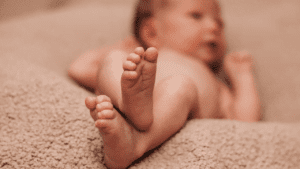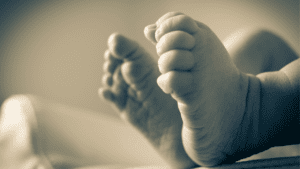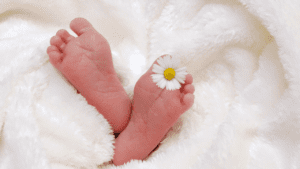Human anatomy has long been a subject of fascination and exploration, particularly when it comes to the intricacies of our lower extremities. Among the debates that have emerged is the comparison between having two distinct feet (bilateral feet) and a singular foot split into two parts (bilateral foot). This article delves into the anatomical structures, functional aspects, advantages, and potential implications of both configurations to offer a comprehensive understanding of this intriguing topic.
Deep Exploration of Bilateral Feet or Bilateral Foot

Bilateral feet, as the prevailing anatomical norm, represent a marvel of evolutionary adaptation, comprising a symphony of bones, joints, muscles, tendons, and ligaments meticulously orchestrated to facilitate bipedal locomotion. This bilateral symmetry allows for independent movement and precise control, enabling a myriad of activities such as walking, running, jumping, and maintaining balance. The intricate interplay between the various components of each foot, including the arches, toes, and plantar surface, contributes to the remarkable versatility and efficiency of human locomotion.
You May Love This One: Blank Is to Blank as Blank Is to Blank? (Fully Explained)
In contrast, the hypothetical concept of bilateral foot challenges conventional anatomical paradigms, proposing a fusion of the two feet into a singular structure with distinct sets of toes, bones, and other anatomical features. While this theoretical construct prompts curiosity and speculation, it also raises profound questions regarding the biomechanical implications and functional adaptations of such a configuration. How would balance and stability be maintained within a unified foot structure? What adaptations would be necessary to facilitate efficient propulsion and mobility in the absence of bilateral symmetry?
Functionality and Mobility:

Bilateral feet serve as the foundation for human locomotion, offering stability, balance, and mobility across diverse terrains and activities. Each foot functions autonomously, responding to sensory feedback and adjusting to changes in terrain, incline, and surface texture. The division of labor between the two feet allows for efficient weight distribution, shock absorption, and propulsion, thereby minimizing the risk of fatigue, injury, and overuse.
In contrast, the functionality and mobility of bilateral foot raise intriguing questions regarding its biomechanics and adaptability. While a unified structure may theoretically streamline propulsion, it could also introduce challenges in terms of flexibility, precision, and adaptability to varying environmental conditions. The integration of sensory feedback, proprioception, and motor control within a singular foot structure remains a topic of speculation and theoretical exploration, highlighting the complexity of human locomotion and biomechanics.
Advantages of Bilateral Feet:

Balance and Stability: The presence of two separate feet provides a wider base of support, enhancing balance and stability, particularly on uneven or unstable surfaces. The distribution of weight and pressure across two feet allows for greater equilibrium and reduces the risk of falls or injuries.
Flexibility and Adaptability: Each foot can move independently, allowing for greater flexibility in adapting to changes in terrain, direction, and movement patterns. The articulation of multiple joints and the coordination of numerous muscles enable a diverse range of movements and activities, from walking and running to dancing and climbing.
Redundancy: In the event of injury or impairment to one foot, the other foot can continue to function independently, albeit with some limitations, thus maintaining mobility and functionality. This redundancy minimizes the impact of unilateral injuries and ensures continuity of movement and activity.
Disadvantages of Bilateral Feet:

Increased Vulnerability to Injury: With a greater number of moving parts, bilateral feet may be more susceptible to injuries such as sprains, fractures, and overuse injuries, particularly in high-impact activities. The complexity of foot anatomy, including the presence of numerous bones, joints, and soft tissues, increases the potential points of vulnerability and necessitates diligent injury prevention and management strategies.
Higher Energy Expenditure: Coordinating the movements of two separate feet requires additional energy expenditure compared to a unified structure, potentially impacting endurance and efficiency. The metabolic demands of bipedal locomotion, coupled with the need for constant postural adjustments and muscular contractions, contribute to the overall energy cost of walking and running.
Complexity in Certain Activities: Activities that demand precise coordination between the two feet, such as dance forms or sports requiring intricate footwork, may pose challenges due to the independent nature of bilateral feet. Achieving synchrony and harmony between the movements of the two feet requires extensive practice, proprioceptive awareness, and neuromuscular control, underscoring the complexity of skilled motor tasks.
Exploring the Hypothetical Bilateral Foot:

The concept of bilateral foot presents a fascinating theoretical construct that challenges traditional anatomical norms and stimulates innovative thinking within the fields of biomechanics, anatomy, and evolutionary biology. However, its practical implementation raises numerous complexities and unanswered questions, necessitating interdisciplinary collaboration and scientific inquiry. How would balance and stability be maintained within a singular foot structure? What adaptations would be necessary to facilitate efficient propulsion and mobility? These are just a few of the intriguing questions that warrant further investigation and exploration.
Conclusion:
In the ongoing debate between bilateral feet or bilateral foot, it is evident that each configuration offers distinct advantages and challenges, reflecting the remarkable complexity and adaptability of the human body. While bilateral feet represent the established norm with proven functionality and adaptability, the concept of bilateral foot stimulates curiosity and imagination, pushing the boundaries of anatomical understanding and biomechanical innovation. Ultimately, the preference for one configuration over the other may depend on specific contexts, individual biomechanics, and the nature of activities performed. Regardless, the exploration of these concepts underscores the dynamic interplay between structure and function in shaping human locomotion and mobility.









